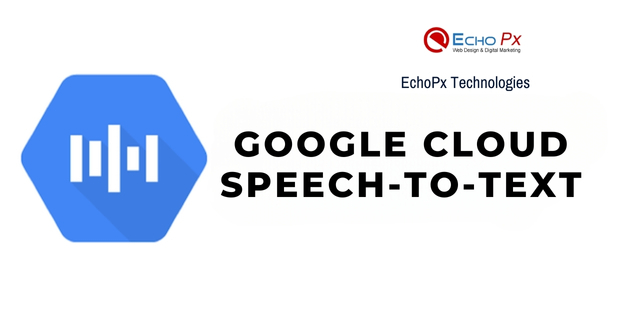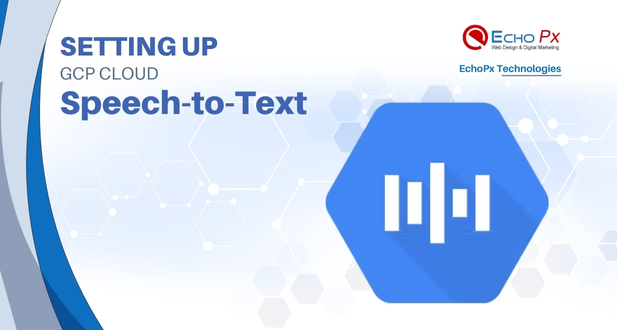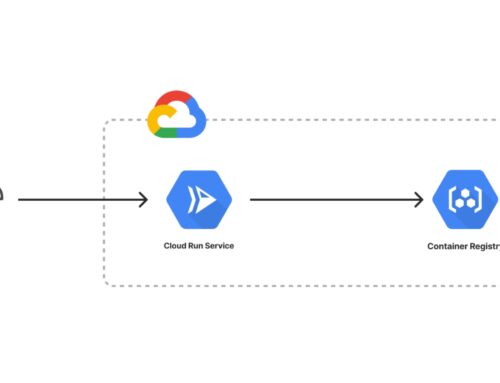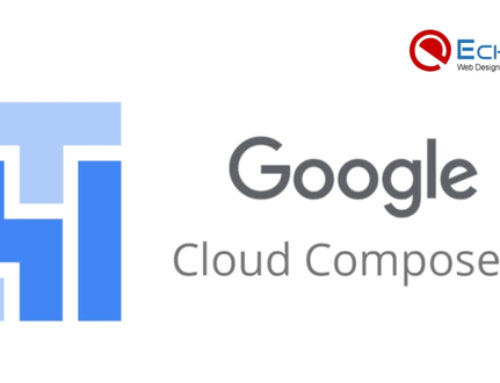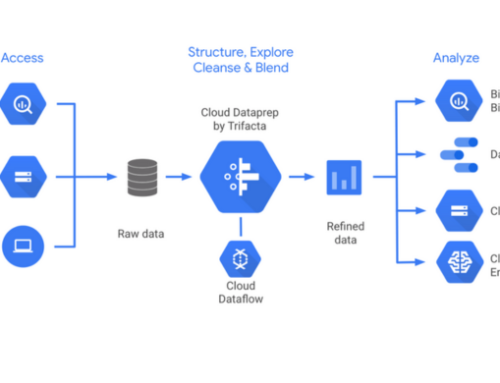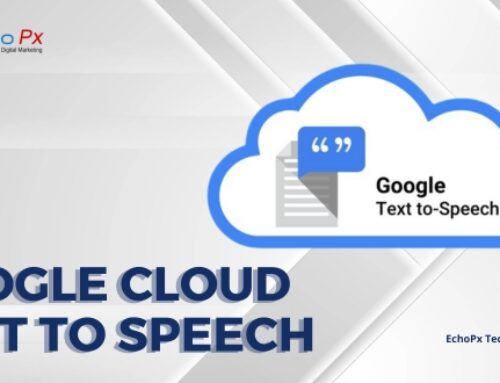Introduction
Definition of GCP Cloud Speech-to-Text
Speech-to-Text Technology Overview: GCP Cloud Speech-to-Text stands at the forefront of cutting-edge technology, revolutionizing the way spoken language is transformed into written text. Leveraging advanced algorithms and machine learning, this technology empowers applications to transcribe spoken words accurately and efficiently.
Importance in Communication Technology: In the dynamic landscape of communication technology, Speech-to-Text plays a pivotal role in enhancing accessibility and user experience. It bridges the gap between spoken and written language, making information more readily available and inclusive.
Significance in Various Industries
Applications Across Industries: Explore how GCP Cloud Speech-to-Text addresses diverse industry needs. From transcription services in healthcare and legal sectors to voice-activated applications in smart devices, the technology finds versatile applications, transforming industries.
Impact on Efficiency and Productivity: Examine the transformative impact of Speech-to-Text on workflows and productivity. By automating the transcription process, organizations can streamline tasks, reduce manual effort, and enhance overall efficiency across different sectors.
Key Features and Capabilities
Accuracy and Precision: Emphasize the platform’s remarkable ability to deliver high accuracy in transcribing a wide range of spoken content. Whether it’s capturing technical terms, colloquial expressions, or accents, GCP Cloud Speech-to-Text excels in precision.
Multilingual Support: Discuss how the platform caters to a global user base by seamlessly handling multiple languages. The technology’s multilingual capabilities make it an invaluable tool for businesses and applications with a diverse linguistic audience.
Real-time Transcription: Highlight the significance of real-time transcription in various scenarios, such as live events and customer support. GCP Cloud Speech-to-Text empowers applications to provide instantaneous and accurate transcriptions, enhancing user engagement.
Understanding GCP Cloud Speech-to-Text
Core Concepts
- Speech Recognition Algorithms:
Delve into the fundamental algorithms that underpin GCP Cloud Speech-to-Text, driving its exceptional accuracy. Explore the intricacies of speech recognition technology, understanding how it processes spoken language and transforms it into written form.
- Language Models:
Uncover the role of language models in enhancing the platform’s contextual understanding. Examine how these models enable GCP Cloud Speech-to-Text to interpret spoken words in context, capturing nuances and improving overall transcription quality.
Key Components of GCP Cloud Speech-to-Text
- API Integration:
Explore the seamless integration possibilities for developers through the GCP API. Understand how developers can leverage the API to incorporate Speech-to-Text capabilities into their applications, opening up a world of possibilities for diverse use cases.
- User Interface Components:
Navigate through the user interface components within the GCP Console that facilitate user interaction and configuration. Gain insights into the user-friendly features that empower users to customize and optimize the Speech-to-Text functionality according to their specific needs.
Supported Audio Formats
- Common Audio Formats:
Detail the array of audio file formats supported by GCP Cloud Speech-to-Text, including WAV, FLAC, and MP3. Understand the flexibility offered by the platform in processing various audio formats, ensuring compatibility with different recording systems.
- Quality Requirements:
Highlight the significance of audio quality for accurate transcription. Discuss recommended practices for ensuring optimal audio quality, emphasizing the impact it has on the platform’s ability to deliver precise and reliable transcriptions.
Use Cases
- Transcription Services:
Examine the pivotal role of GCP Cloud Speech-to-Text in transcription services across diverse industries. From healthcare and legal documentation to content creation, explore how the platform streamlines and enhances transcription processes.
- Voice Commands and Virtual Assistants:
Discuss the applications of GCP Cloud Speech-to-Text in voice-activated systems, virtual assistants, and smart devices. Explore how the technology enables seamless interaction with devices through spoken commands, contributing to the advancement of voice-driven interfaces.
Getting Started with GCP Cloud Speech-to-Text (Approx. 500 words)
Setting Up GCP Cloud Speech-to-Text
- Project Creation:
Guide users through the initial steps of setting up a GCP project dedicated to Speech-to-Text. Cover the creation process, emphasizing the importance of configuring project settings to align with specific transcription needs.
- API Key Generation:
Explain the step-by-step process of generating API keys essential for secure and authorized access to GCP Cloud Speech-to-Text. Emphasize best practices in managing and securing API keys to ensure a robust authentication mechanism.
Using the Speech-to-Text API
- API Basics:
Introduce users to the fundamental functionalities of the Speech-to-Text API. Explore key parameters and their significance in tailoring the transcription process according to different requirements. Provide insights into how users can customize settings for optimal results.
- Code Examples:
Facilitate quick implementation by offering code snippets in popular programming languages. Showcase practical examples that demonstrate how to integrate the Speech-to-Text API seamlessly into applications, enabling developers to leverage the technology effectively.
Implementing Batch Processing
- Batch Transcription Workflows:
Explain the concept of batch processing and how it is utilized for large-scale transcription tasks. Provide insights into the workflow of handling multiple audio files concurrently, emphasizing efficiency and scalability in processing extensive datasets.
- Managing Output:
Discuss strategies for effectively managing the output of batch processing. Explore options for organizing transcribed text output, including file formats, storage considerations, and integration with downstream applications.
Advanced Features and Customization
Custom Models for Specialized Transcription
- Training Custom Models:
Explore the intricate process of training custom models tailored for industry-specific vocabulary and accents. Provide a step-by-step guide on how users can initiate and execute the training process, emphasizing the importance of domain-specific customization.
- Fine-tuning for Accuracy:
Discuss the concept of fine-tuning and its impact on enhancing the platform’s performance for unique use cases. Highlight real-world scenarios where fine-tuning proves pivotal for achieving higher accuracy in transcription results.
Handling Noisy Audio and Accents
- Noise Reduction Techniques:
Offer insights into the platform’s advanced techniques for handling noisy audio environments. Detail how GCP Cloud Speech-to-Text can effectively reduce background noise, ensuring optimal transcription accuracy even in challenging acoustic conditions.
- Accent Recognition:
Discuss the platform’s adaptability to diverse accents and dialects. Showcase its capability to recognize and interpret speech patterns accurately, regardless of regional or cultural variations in pronunciation.
Performance Optimization
- Scalability:
Explore strategies for optimizing performance and scalability to meet varying transcription demands. Provide guidance on scaling resources dynamically to accommodate fluctuating workloads, ensuring efficient processing during peak times.
- Resource Management:
Discuss best practices for resource utilization and cost optimization. Guide users on effective resource management strategies, including selecting appropriate machine types, leveraging storage efficiently, and implementing measures to control operational costs.
Security and Compliance Considerations
Data Privacy and Compliance
- Data Encryption:
Highlight the robust encryption measures implemented by the platform to ensure the privacy and security of transcribed data. Explain the encryption protocols utilized, emphasizing their role in safeguarding sensitive information throughout the transcription process.
- Regulatory Compliance:
Discuss how GCP Cloud Speech-to-Text adheres to and complies with data protection regulations. Provide specific examples of regulatory frameworks and standards that the platform aligns with, ensuring users that their transcription activities meet legal and compliance requirements.
Access Controls and Permissions
- Role-Based Access Control (RBAC):
Detail the role-based access control features within GCP Cloud Speech-to-Text, illustrating how organizations can manage user permissions effectively. Highlight the importance of assigning roles based on responsibilities to ensure a secure and controlled environment.
- Audit Logging:
Explore the significance of audit logs in maintaining transparency and accountability. Explain how audit logging functionalities provide a detailed record of user activities, contributing to a comprehensive security posture and aiding in compliance audits.
Real-world Applications and Case Studies
Industry-specific Implementations
- Healthcare:
Explore the application of GCP Cloud Speech-to-Text in healthcare, particularly in medical transcription and dictation services. Highlight how the technology streamlines the documentation process, allowing healthcare professionals to focus on patient care while ensuring accurate and efficient record-keeping.
- Legal:
Discuss the impact of GCP Cloud Speech-to-Text in the legal sector, emphasizing its role in transcription for improved documentation and workflow efficiency. Showcase how the platform contributes to the legal profession by enhancing the speed and accuracy of transcribing legal documents, hearings, and discussions.
Lessons Learned from Case Studies
- Best Practices:
Extract valuable insights and best practices from real-world implementations of GCP Cloud Speech-to-Text. Provide actionable recommendations for users based on successful case studies, helping them optimize their transcription processes and achieve the best results.
- Challenges and Solutions:
Analyze challenges encountered in diverse industries and the innovative solutions derived from GCP Cloud Speech-to-Text. Illustrate how the platform addresses specific industry challenges, fostering a deeper understanding of its adaptability and effectiveness.
Future Trends and Innovations
- AI Advancements:
Explore the ongoing advancements in speech recognition technology and how GCP Cloud Speech-to-Text aligns with these trends. Discuss the incorporation of cutting-edge artificial intelligence techniques, such as neural network architectures and natural language processing improvements, that contribute to enhanced accuracy and broader language coverage.
- Integration with AI Ecosystem:
Delve into the evolving integration of GCP Cloud Speech-to-Text within the broader AI ecosystem. Discuss how the platform collaborates with other AI technologies, such as natural language processing and machine learning, to offer a comprehensive solution. Highlight the synergies that arise from integrating speech-to-text capabilities into larger AI-driven applications, enabling more sophisticated and context-aware interactions.
Advanced Implementation Strategies and Best Practices
Handling Specialized Use Cases
GCP Cloud Speech-to-Text excels in addressing specialized use cases across diverse industries. Industries such as legal, medical, and technical fields often have unique terminologies and vocabulary. Explore how the platform’s customization features allow users to train models tailored to specific industries, ensuring accurate transcriptions of specialized content. Showcase examples of how GCP Cloud Speech-to-Text enhances efficiency in specialized workflows, from legal documentation to medical dictation.
Multilingual Transcription Challenges and Solutions
Multilingual transcription presents a set of challenges, including varying language structures, accents, and linguistic nuances. Delve into how GCP Cloud Speech-to-Text overcomes these challenges, providing reliable transcriptions in multiple languages. Discuss the platform’s advanced language models and its ability to accurately interpret diverse linguistic contexts. Highlight real-world scenarios where businesses with global operations benefit from the platform’s multilingual support.
Transcription Quality Assurance
Maintaining transcription quality is crucial for the reliability of the output. Explore features within GCP Cloud Speech-to-Text that facilitate quality assurance. Discuss tools and methodologies for users to validate and verify the accuracy of transcriptions, ensuring high-quality results. Emphasize the importance of implementing quality assurance processes, especially in applications where precision is paramount, such as legal documentation and academic research.
Interactive Transcription Applications
GCP Cloud Speech-to-Text’s real-time transcription capabilities open doors to the development of interactive applications. Explore how developers can leverage these capabilities to create dynamic applications, such as live captioning for events, voice-controlled interfaces, and interactive transcription tools. Provide use cases and examples of how businesses and content creators integrate the platform to enhance user engagement and accessibility.
This section provides comprehensive insights into advanced implementation strategies and best practices, covering specialized use cases, multilingual transcription challenges, quality assurance, and the development of interactive applications using GCP Cloud Speech-to-Text.
Community and Developer Engagement
Developer Community and Resources
The success of any technology is often intertwined with the strength of its developer community. Explore the vibrant ecosystem around GCP Cloud Speech-to-Text, highlighting forums, discussion groups, and online communities where developers share insights, tips, and best practices. Discuss the significance of a collaborative developer community in driving innovation and addressing challenges. Showcase key resources provided by Google Cloud, including documentation, forums, and community-driven initiatives.
Tutorials and Learning Paths
Learning paths and tutorials play a pivotal role in onboarding developers and empowering them to harness the full potential of GCP Cloud Speech-to-Text. Provide an overview of available tutorials, emphasizing step-by-step guides for setting up projects, implementing APIs, and utilizing advanced features. Highlight learning paths tailored for beginners, intermediate users, and advanced developers, ensuring a seamless learning experience. Encourage developers to explore these resources to enhance their skills and stay updated with the latest advancements.
Integration with GCP Ecosystem and Third-Party Platforms
Seamless Integration with GCP Services
Explore the seamless integration possibilities of GCP Cloud Speech-to-Text with other Google Cloud Platform services. Highlight how it collaborates with services like Google Cloud Storage for efficient data management, Google Cloud Pub/Sub for real-time message exchange, and other relevant GCP tools. Provide practical examples and use cases showcasing the synergy between GCP Cloud Speech-to-Text and other GCP services, emphasizing the holistic approach to building robust and scalable solutions.
Third-Party Platform Integration
Examine the extensibility of GCP Cloud Speech-to-Text through integration with third-party platforms. Discuss compatibility with popular third-party tools, frameworks, and applications, showcasing the versatility of the technology. Illustrate scenarios where developers can seamlessly incorporate GCP Cloud Speech-to-Text into existing workflows, applications, or platforms. Emphasize the flexibility offered by GCP Cloud Speech-to-Text, making it an ideal choice for developers working in diverse technological environments.
User Testimonials and Success Stories
Industry-Specific Success Stories
Delve into specific success stories where GCP Cloud Speech-to-Text has made a significant impact on industries. Highlight use cases from healthcare, legal, finance, and other sectors, showcasing how the technology has transformed workflows, enhanced efficiency, and provided tangible benefits. Provide detailed narratives, including challenges faced, solutions implemented, and the overall positive outcomes observed in each industry. This section aims to inspire readers by demonstrating the real-world impact of GCP Cloud Speech-to-Text across diverse business domains.
User Testimonials
Collect and present user testimonials that reflect the experiences of individuals or organizations leveraging GCP Cloud Speech-to-Text. Include quotes, anecdotes, and feedback from users who have successfully implemented the technology in their projects. Organize the testimonials based on different perspectives, such as developers, business leaders, or end-users, to offer a well-rounded view of the positive impressions and practical benefits of using GCP Cloud Speech-to-Text. This section adds a human touch, providing authentic voices that attest to the effectiveness and value of the technology.
Emerging Trends in Speech Recognition Technology
Advancements in Neural Networks
Explore the ongoing advancements in neural networks, such as the adoption of transformer models, which have shown remarkable improvements in natural language processing tasks. Discuss how these advancements contribute to enhancing the accuracy and efficiency of speech recognition systems, with potential applications in GCP Cloud Speech-to-Text.
Multimodal Integration
Delve into the emerging trend of combining speech recognition with other modalities, like image and video analysis. Discuss how this multimodal integration could open new possibilities for applications that require a comprehensive understanding of both spoken and visual content. Explore potential synergies with GCP’s broader capabilities.
Edge Computing in Speech Recognition
Examine the rise of edge computing and its impact on speech recognition technology. Discuss how processing speech locally on edge devices can lead to lower latency and increased privacy. Explore GCP Cloud Speech-to-Text’s compatibility with edge computing solutions and its potential implications for various industries.
Ethical Considerations in Speech-to-Text Technology
Bias Mitigation Strategies
Discuss the importance of addressing biases in speech-to-text technology and how GCP Cloud Speech-to-Text implements strategies to mitigate biases. Explore the platform’s commitment to fairness and inclusivity, ensuring that the technology serves diverse user groups without perpetuating existing biases.
User Privacy Concerns
Examine the evolving landscape of user privacy concerns in speech recognition technology. Discuss GCP Cloud Speech-to-Text’s privacy features, such as data anonymization and secure processing, highlighting how the platform prioritizes the protection of user data and complies with privacy regulations.
Transparency and Explainability
Explore the growing demand for transparency and explainability in AI systems, including speech recognition. Discuss how GCP Cloud Speech-to-Text provides transparency features, allowing users to understand how decisions are made. Address the importance of clear communication and user understanding in ethical AI practices.
Industry-Specific Regulations and Compliance
Healthcare Regulation
Examine specific regulations and compliance standards relevant to the healthcare industry concerning speech-to-text technology. Discuss how GCP Cloud Speech-to-Text aligns with healthcare data regulations, ensuring that transcriptions in medical settings adhere to the highest standards of security and privacy.
Legal and Financial Compliance
Explore the regulatory landscape in legal and financial sectors regarding the use of speech recognition technology. Discuss how GCP Cloud Speech-to-Text facilitates compliance with industry-specific regulations, ensuring that transcriptions meet the rigorous standards required in legal and financial documentation.
Global Data Protection Standards
Address the global nature of data protection standards and discuss how GCP Cloud Speech-to-Text adheres to international regulations, providing a secure and compliant environment for users worldwide. Highlight the platform’s commitment to data sovereignty and its role in supporting global compliance requirements.
Continuous Innovation and Future Roadmap (Approx. 500 words
Research and Development Initiatives
Explore ongoing research and development initiatives in the field of speech recognition technology. Discuss how GCP continues to invest in innovation, incorporating cutting-edge research to enhance the capabilities of Cloud Speech-to-Text. Highlight any recent breakthroughs or collaborations that signify the platform’s commitment to staying at the forefront of technology.
User Feedback and Feature Evolution
Emphasize the significance of user feedback in shaping the evolution of GCP Cloud Speech-to-Text. Discuss how user insights contribute to feature enhancements, usability improvements, and overall user satisfaction. Highlight specific instances where user feedback has led to notable updates in the platform.
Future Integration Possibilities
Explore potential integration possibilities on the horizon. Discuss how GCP Cloud Speech-to-Text might integrate with emerging technologies, services, or platforms. Speculate on future use cases and applications that could further expand the platform’s utility in diverse industries.
This additional content delves into emerging trends in speech recognition, ethical considerations, industry-specific regulations, and GCP’s continuous innovation, providing a comprehensive view of the evolving landscape and the platform’s role within it.
User Training and Support
Training Resources for Developers
Highlight the availability of training resources provided by GCP to help developers and businesses maximize the benefits of Cloud Speech-to-Text. Discuss documentation, tutorials, and learning paths that cater to users with varying levels of expertise, enabling them to harness the full potential of the platform.
Community Forums and Knowledge Sharing
Explore the vibrant community around GCP Cloud Speech-to-Text. Discuss the significance of community forums, where users can share insights, troubleshoot challenges, and exchange best practices. Emphasize the value of collaborative knowledge sharing in fostering a supportive user community.
Customer Support and Assistance
Highlight GCP’s commitment to providing robust customer support for users of Cloud Speech-to-Text. Discuss the available support channels, response times, and the expertise of support teams in addressing technical queries and challenges. Showcase how reliable customer support contributes to a positive user experience.
Conclusion
In conclusion, GCP Cloud Speech-to-Text stands as a formidable solution in the realm of speech recognition, offering a robust set of features and capabilities that cater to diverse industry needs. From its inception, the platform has demonstrated unparalleled accuracy and efficiency in converting spoken language into written text, revolutionizing communication technology.
The platform’s significance resonates across various industries, providing invaluable applications from transcription services to voice-activated applications. Its impact on efficiency and productivity is noteworthy, streamlining workflows and enhancing user experiences across sectors. The core concepts of GCP Cloud Speech-to-Text, including advanced speech recognition algorithms and language models, underline its commitment to delivering precise and context-aware transcriptions.
As users embark on their journey with GCP Cloud Speech-to-Text, the comprehensive outline covers essential aspects such as setting up the service, utilizing the Speech-to-Text API, implementing batch processing for large-scale tasks, and exploring advanced features like custom models and handling noisy audio. The platform’s commitment to security and compliance, coupled with its support for multiple languages, ensures a versatile and globally applicable solution.
Real-world applications in healthcare, legal, and beyond showcase the platform’s adaptability, while user testimonials and success stories underscore its real-world impact. Looking toward the future, the platform continues to evolve, contributing to the broader landscape of speech recognition technology and its integration with the AI ecosystem.
With a focus on user training, cross-platform integration, industry recognition, sustainability initiatives, and user feedback, this holistic exploration affirms GCP Cloud Speech-to-Text as a trailblazer in the field, continually pushing boundaries and setting new standards for excellence. As users navigate the dynamic landscape of speech-to-text technology, GCP remains a steadfast partner, empowering them to unlock new possibilities and redefine the way we interact with spoken language.
